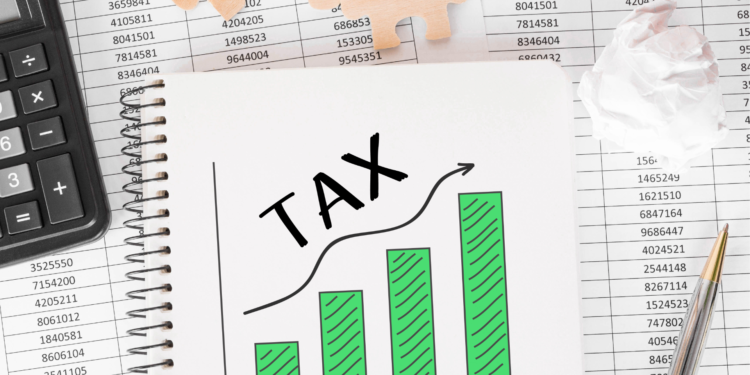Kompas.id | 18 April 2024 – One of the campaign promises of the Prabowo Subianto-Gibran Rakabuming Raka pair that will soon take over the throne of the Indonesian presidency is to realize the target of a 23 percent tax ratio. Although it seems ambitious, this target is quite crucial because the tax ratio reflects the fiscal capacity of a country.
A higher tax ratio signifies a country’s ability to provide public goods and services without resorting to debt. This, in turn, paves the way for sustainable economic growth. Therefore, it is imperative to strive for an increase in the tax ratio.
The World Bank sets the lower limit of the tax ratio at 15 percent as an international benchmark. This recommendation is supported by empirical findings showing that over a full decade, countries with tax ratios above 15 percent can enjoy per capita income 7.5 percent higher than the set target (Gaspar et al., 2016).
However, the facts on the ground will force Prabowo-Gibran to work harder. Indonesia’s tax ratio in 2023 actually fell by around 18 basis points, from 10.39 percent (2022) to 10.21 percent (2023). If we look back, Indonesia’s average tax ratio in the last two decades has been around 10 percent.
The persistent annual trend of the tax ratio presents a formidable challenge for Prabowo-Gibran. Boosting it to 23 percent will require significant effort and strategic planning.
-
Numerator and denominator
Establishing a State Revenue Agency (BPN) is a realistic policy option, but it will not necessarily raise the tax ratio to 23 percent. Policymakers must return to the basic concept of tax ratio to identify strategies.
In general, the tax ratio is defined as the ratio between tax revenue and gross domestic product (GDP). This means that the improvement of the tax ratio only revolves around the amount of the “numerator” (tax revenue) and the “denominator” (GDP). Therefore, the efforts made must lead to the escalation of the “numerator” figure without involving the “denominator.”
Tinkering with the “numerator” component is a shortcut to boosting the tax ratio. For example, you could expand the definition of tax revenue to include local taxes and natural resource revenues in line with the IMF calculation model.
Unfortunately, even with that calculation model, it is likely that it will only be able to boost the tax ratio to 12 percent. In addition, expanding the scope of tax revenue does not automatically indicate an increase in a country’s fiscal capacity. As a result, it must be recognized that the effectiveness of national tax collection still needs a lot of improvement.
Relying on extensification to boost the tax ratio is not wise, given the economic conditions that are vulnerable to external shocks. Moreover, in the vice presidential debate, Gibran analogized extensification with “expanding the zoo” and “fattening the animals”.
This strategy will not significantly increase the tax ratio because the growth in the “numerator” and “denominator” will chase each other.
The above thesis is justified by the fact that the tax elasticity coefficient in 2023 is only 1.3. This figure is obtained by comparing tax growth and GDP growth in 2023. This means that 1 percent of GDP growth can only increase tax revenue by 1.3 percent. Empirical evidence also confirms that no country has been able to increase tax revenue twice as much as the increase in GDP (Abimanyu, 2015).
-
Structural transformation
The low tax elasticity coefficient above may be closely related to the structure of GDP formation in Indonesia. Referring to World Bank data, the share of services in GDP is the most dominant (42 percent) and is the only sector with a positive trend in the last two decades.
During the same period, the contribution of agriculture and manufacturing to GDP fell by 6.5 and 3.6 percentage points, respectively.
This marks a shift in economic activity towards services, known as structural transformation. The literature claims structural transformation is negatively correlated with taxation, especially in developing countries (Cevik et al., 2019). This is because the majority of business units in the service sector are informal, making it difficult to tax (Rajaraman, 2004).
Therefore, without adjustments to the tax regime, structural transformation is allegedly an obstacle to increasing the tax ratio.
This problem is even more relevant in the Indonesian context, where an increase in nonmarket services activities, such as health, education, and social services, mainly drives structural transformation. This group of services includes certain strategic taxable services that are exempt from Value Added Tax (VAT), as stated in Law No. 7/2021 on Harmonization of Tax Regulations (HPP).
In addition to these three types of services, transportation services are also classified as certain strategic JKP and are exempt from VAT. This service activity also contributes to the expansion of the service sector but is not as significant as health, education, and social services. Meanwhile, trade, hospitality, and restaurant services, which are counterproductive to the positive pace of service activities, receive different tax treatments.
Under the VAT Law, restaurants and hotels are local tax objects, so their collection does not contribute to increasing the “numerator” component of the tax ratio. On the other hand, trading activities are not VAT-exempt, so they are levied at the standard rate of 11 percent.
At this point, we can conclude that structural transformation tends to narrow the VAT base. This is due to the significant gap between VAT policy and revenue potential (policy gap).
-
Tax regime adjustment
Therefore, in the absence of tax regime adjustments, structural transformation is allegedly an obstacle to improving the tax ratio. This concern is understandable, considering that VAT accounts for 40 percent of total tax revenue. Empirical studies also show that the overly broad scope of VAT exemptions in the service sector not only disrupts the tax system but can also distort the economy in aggregate (De la Feria & Krever, 2013).
We need to remember that some services classified as certain JKP are organized by the private sector by charging high prices that are only affordable to high-end consumers. This implies that the VAT exemption on certain JKP has the potential to create a large tax expenditure, but its implementation is not necessarily on target.
Thus, it is time to minimize the policy gap and increase the “numerator” side of the tax ratio. This can be started, among other things, by issuing a derivative regulation of the Tax HPP Law that further explains the service providers who are entitled to obtain VAT exemption facilities.
For example, a certain range of fees can be used to classify the level of costliness of the service activity in question. This step not only represents an extensification effort but also creates vertical equity.
Extensification can also be pursued by transforming the informal economy into the real economy so that it can be taxed. Based on the estimation of Elgin and Öztunali (2014), the informal economy in Indonesia contributes 19.05 percent to GDP. Simplifying the taxpayer registration process through the implementation of a core tax administration system is suspected to minimize this figure.
Considering the above points, tax extensification will undoubtedly boost the tax ratio consistently. However, there is no guarantee that the 23 percent target will be achieved.
This is because tax is basically a “fiscal contract” between the government and society. This means that no matter how good the system is, it will not work without tax awareness from the community.
Gustofan Mahmud, Economic Analyst Pratama Institute for Fiscal Policy & Governance Studies dan Dosen STIE Swadaya Jakarta








